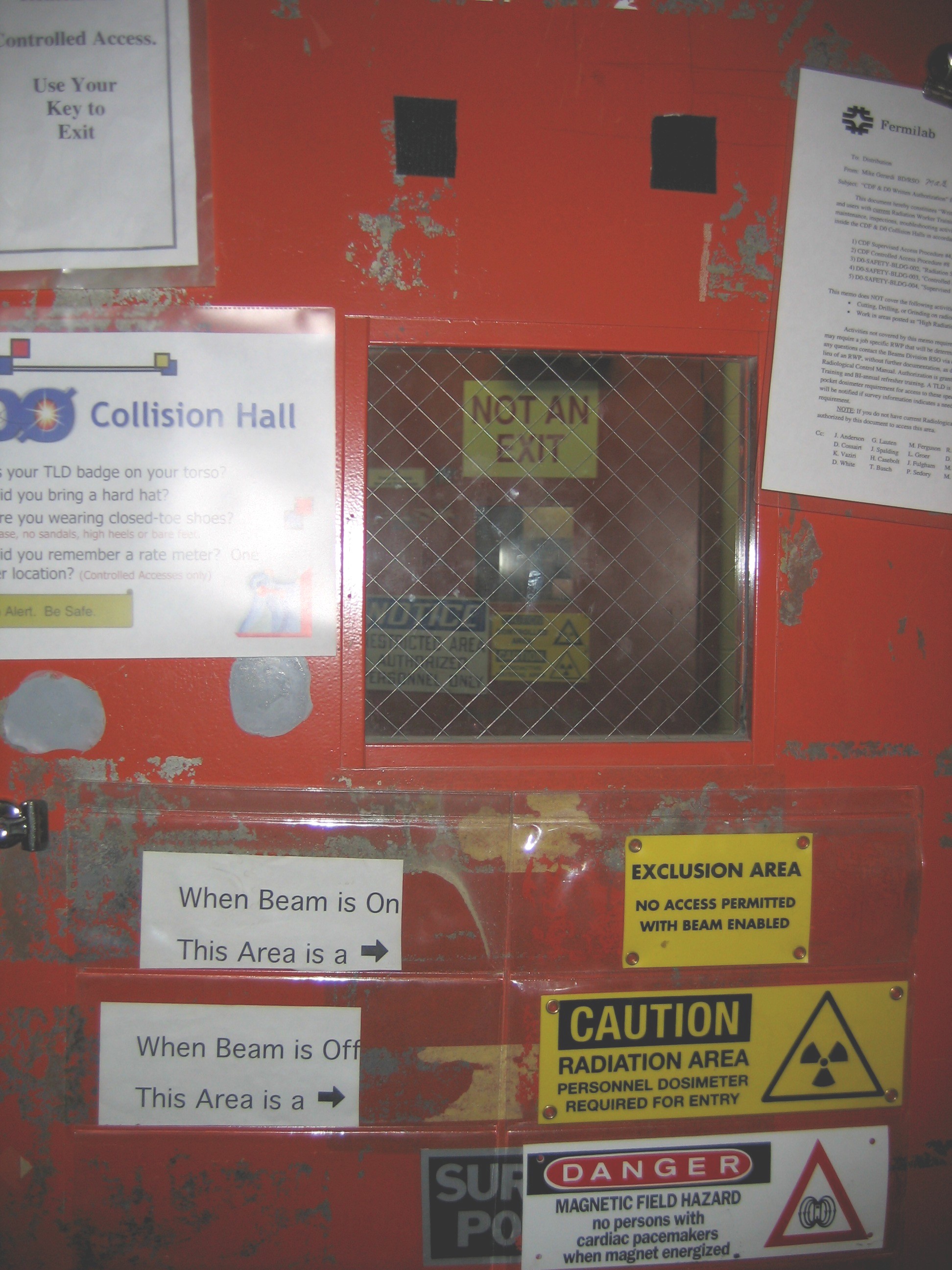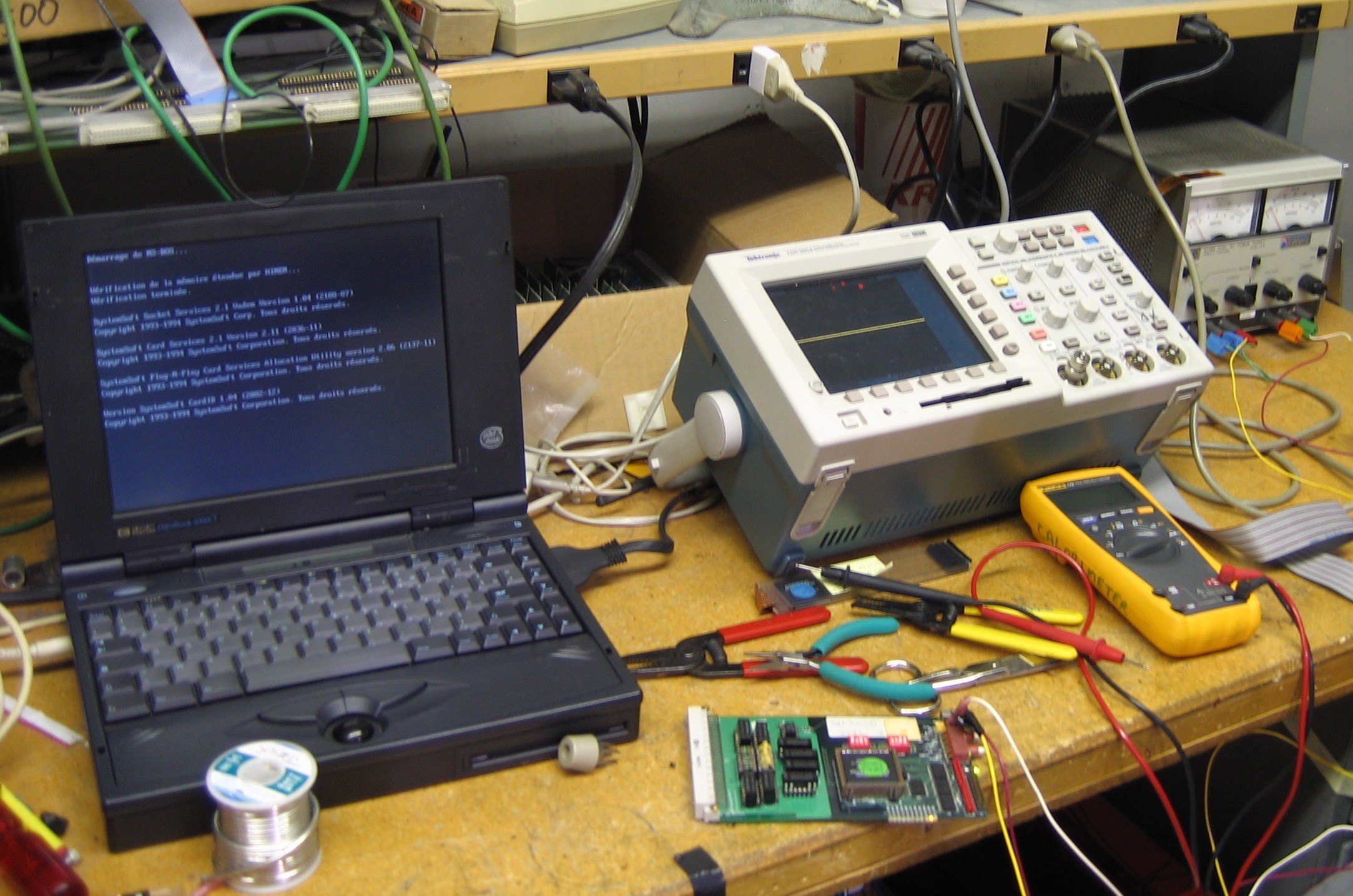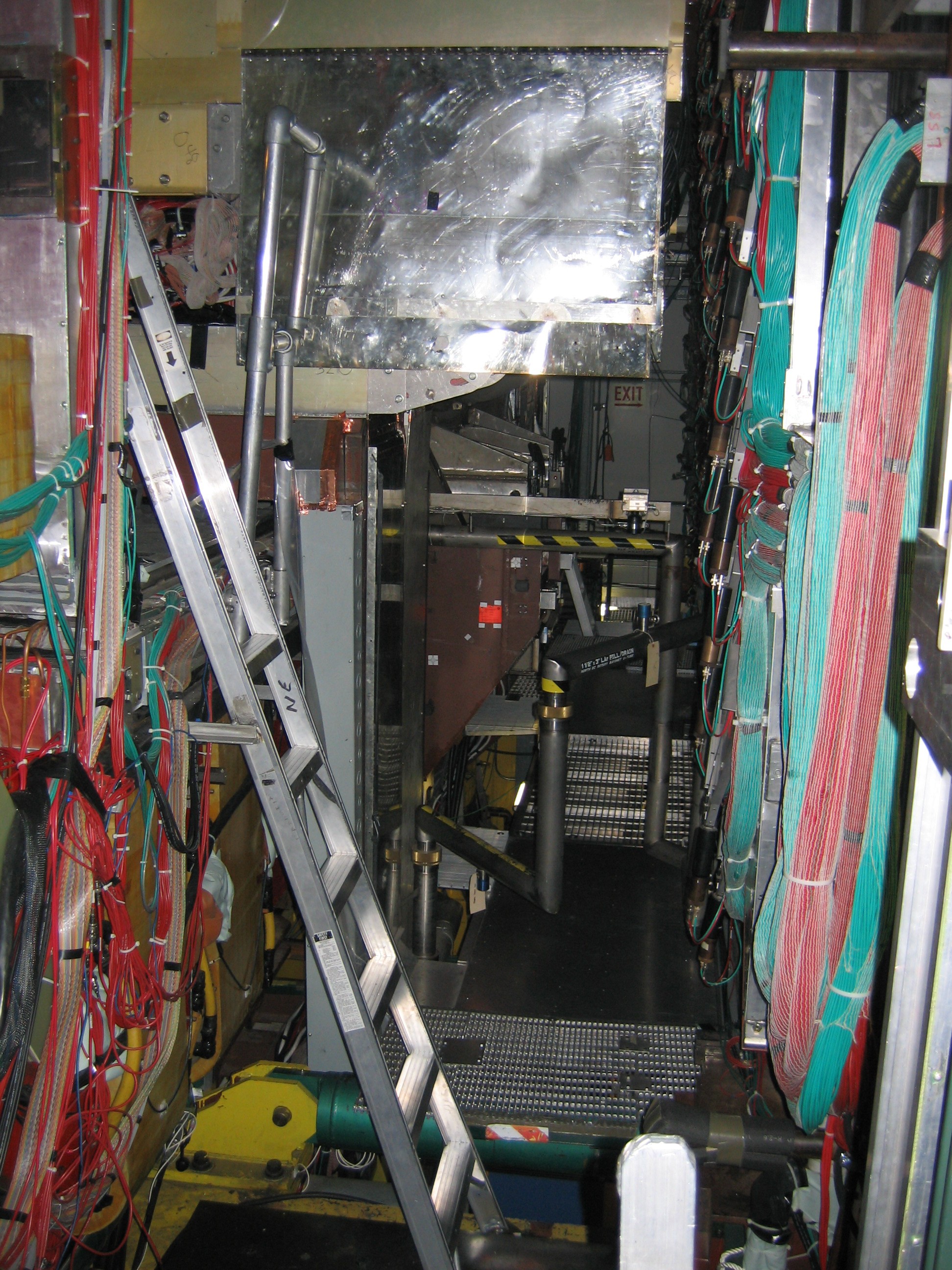|
Safe Collisions
... Among Particles
Ursula
Bassler
Security
training – yesterday, I flew in from Paris, where
my home institution is, to Fermilab, close to Chicago.
I am working as a particle physicist on the D0-experiment,
most of the time remotely, except for important meetings or
work to be carried out directly on the detector. Currently,
the Tevatron-accelerator is shut down to
allow for maintenance and improvements to the detectors, CDF
and D0, and to the accelerator itself.
Our institution built a calibration system for the calorimeter,
which is the device measuring the energy of the particles
produced in a proton-antiproton collision. I was
notified that one of the devices is not working properly any
more; therefore I will have to go into the “collision hall,”
where the detector is located, and find out what is going
wrong.

The collision hall is an area that is closed
to access during beams operation, as the radiation produced
is potentially dangerous, even though it
is mostly absorbed by the detector. There is only one door
giving access to the collision hall, which is normally closed
by special keys guarded in a locked key-tree.
If ever this door is opened during beams operation, the accelerator
immediately drops the beams to prevent any potential hazard.
This would cost a lot of money, and you can
be sure that a thorough investigation would be carried out,
including probably the whole laboratory being closed for some
time. As far as I know, it has never happened.
During maintenance periods like now, the access to the collision
hall is allowed more easily, but it still requires one to
get an appropriate key, and for this, the security training
is necessary.
At Fermilab, as in all accelerator facilities, security
is a very important issue. No physics
result would be worth damage done to anyone. Besides radiation,
potential hazards are related to the electrical equipment
or even to a screwdriver falling down from the hand of a college
working high above; our detector is about 20m long, 10m high
and, to produce a magnetic field of 2T which allows measuring
the momentum of charged particles, we need currents of nearly
5000 Amp.
My training went well: I spent the whole morning reading the
documentation, following the technical demonstration, and
completing three exams – I was as worried
to fail as in high school! And I can tell, for the others
in the class, it was just the same.
Now, I feel pretty excited going into the detector to do all
of my measurements. I can’t tell you exactly why spending
time in a rather dark, noisy place, fumbling
around with an oscilloscope, a once in a while failing test-board,
and an archaic laptop can give me pleasure.

I am still thrilled, when I am climbing through the detector,
thinking about how extraordinary it is to measure infinitesimal
particles with it. I can be marveled in front of a panel with
blinking LED’s like a child in front of a Christmas tree.
And there is even a particular smell, somewhere between my
father’s workshop and a production line.
Ok, admittedly, after a week in there, taking my measurements,
climbing up and down the ladders, cursing failing equipment,
I will be happy to fly back to Paris, working on the computer
in my office. But I will still be proud to have made something
worked that will allow us to take better data.

The wonderful thing about particle physics
is that there are so many different fields where one can contribute,
from detector design, electronics, software, to ultimately
data analysis and the interpretation of the results. To go
from one to the other allows developing skills in many different
areas and finding out what is most interesting and suits one
best.
And after one week on my computer back home, I know I will
be cursing the software again!
|
|